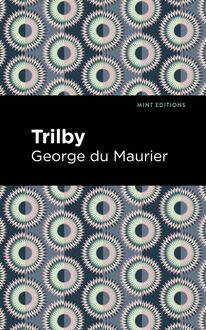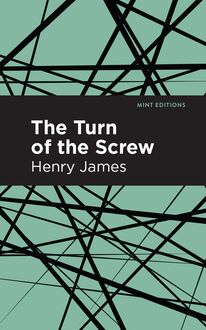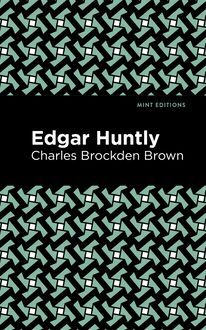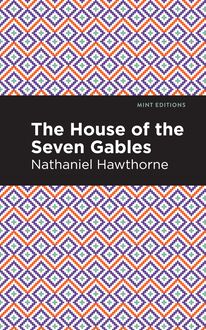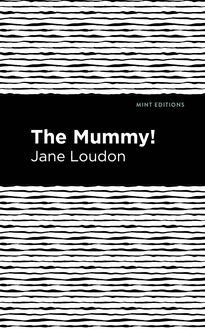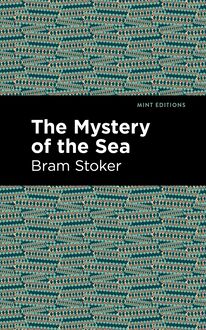-
 Univers
Univers
-
 Ebooks
Ebooks
-
 Livres audio
Livres audio
-
 Presse
Presse
-
 Podcasts
Podcasts
-
 BD
BD
-
 Documents
Documents
-
- Cours
- Révisions
- Ressources pédagogiques
- Sciences de l’éducation
- Manuels scolaires
- Langues
- Travaux de classe
- Annales de BEP
- Etudes supérieures
- Maternelle et primaire
- Fiches de lecture
- Orientation scolaire
- Méthodologie
- Corrigés de devoir
- Annales d’examens et concours
- Annales du bac
- Annales du brevet
- Rapports de stage
La lecture à portée de main
Vous pourrez modifier la taille du texte de cet ouvrage
Découvre YouScribe en t'inscrivant gratuitement
Je m'inscrisDécouvre YouScribe en t'inscrivant gratuitement
Je m'inscrisEn savoir plus
Vous pourrez modifier la taille du texte de cet ouvrage
En savoir plus

Description
The Mystery of the Sea (1902) is a novel by Irish author Bram Stoker. Combining occult elements with historical events involving the Spanish-American War and the 1588 defeat of the Spanish Armada, The Mystery of the Sea is an informed mystery and political thriller that helped to establish the Irish master of Gothic horror’s reputation as a leading writer of the early-twentieth century.
On his first trip to Cruden Bay, a seaside village near Aberdeen, Scotland, a young Englishman named Archibald Hunter discovers his gift for second sight. This strange power grants him the ability to predict future events, as well as to see spirits. Trained by a local woman named Gormala MacNeil, who shares his powers, Hunter learns to control his second sight. When he returns to Cruden Bay a year later to live their permanently, he unwittingly purchases a trunk containing letters and documents dating back to the 16th century. With the help of Marjory Drake, a secretive American, he deciphers the letters to discover clues leading to the location of a secret treasure. Hidden by a Spaniard named Don Bernadino de Escoban following the English defeat of the Spanish Armada, the treasure has long been forgotten to all but Don Bernadino’s descendants. Enveloped in layers of mystery, pulled into events involving ancient piracy and the Spanish-American War, Hunter must rely on his hidden powers and uncommon courage to save not only the woman he loves, but his life.
With a beautifully designed cover and professionally typeset manuscript, this edition of Bram Stoker’s The Mystery of the Sea is a classic of Irish literature reimagined for modern readers.
Sujets
Informations
| Publié par | Mint Editions |
| Date de parution | 09 février 2021 |
| Nombre de lectures | 0 |
| EAN13 | 9781513276519 |
| Langue | English |
| Poids de l'ouvrage | 4 Mo |
Informations légales : prix de location à la page 0,0500€. Cette information est donnée uniquement à titre indicatif conformément à la législation en vigueur.
Extrait
The Mystery of the Sea
Bram Stoker
The Mystery of the Sea was first published in 1902.
This edition published by Mint Editions 2021.
ISBN 9781513271514 | E-ISBN 9781513276519
Published by Mint Editions®
minteditionbooks.com
Publishing Director: Jennifer Newens
Design & Production: Rachel Lopez Metzger
Project Manager: Micaela Clark
Typesetting: Westchester Publishing Services
C ONTENTS I. S ECOND S IGHT II. G ORMALA III. A N A NCIENT R UNE IV. L AMMAS F LOODS V. T HE M YSTERY OF THE S EA VI. T HE M INISTERS OF THE D OOM VII. F ROM O THER A GES AND THE E NDS OF THE E ARTH VIII. A R UN ON THE B EACH IX. C ONFIDENCES AND S ECRET W RITING X. A C LEAR H ORIZON XI. I N THE T WILIGHT XII. T HE C IPHER XIII. A R IDE T HROUGH THE M OUNTAINS XIV. A S ECRET S HARED XV. A P ECULIAR D INNER -P ARTY XVI. R EVELATIONS XVII. S AM A DAMS ’ S T ASK XVIII. F IREWORKS AND J OAN OF A RC XIX. O N C HANGING O NE ’ S N AME XX. C OMRADESHIP XXI. T HE O LD F AR W EST AND THE N EW XXII. C ROM C ASTLE XXIII. S ECRET S ERVICE XXIV. A S UBTLE P LAN XXV. I NDUCTIVE R ATIOCINATION XXVI. A W HOLE W EDDING D AY XXVII. E NTRANCE TO THE C AVERN XXVIII. V OICES IN THE D ARK XXIX. T HE M ONUMENT XXX. T HE S ECRET P ASSAGE XXXI. M ARJORY ’ S A DVENTURE XXXII. T HE L OST S CRIPT XXXIII. D ON B ERNARDINO XXXIV. T HE A CCOLADE XXXV. T HE P OPE ’ S T REASURE XXXVI. T HE R ISING T IDE XXXVII. R OUND THE C LOCK XXXVIII. T HE D UTY OF A W IFE XXXIX. A N U NEXPECTED V ISITOR XL. T HE R EDEMPTION OF A T RUST XLI. T REASURE T ROVE XLII. A S TRUGGLE XLIII. T HE H ONOUR OF A S PANIARD XLIV. T HE V OICE IN THE D UST XLV. D ANGER XLVI. A RDIFFERY M ANSE XLVII. T HE D UMB C AN S PEAK XLVIII. D UNBUY H AVEN XLIX. G ORMALA ’ S L AST H ELP L. T HE E YES OF THE D EAD LI. I N THE S EA F OG LII. T HE S KARES LIII. F ROM THE D EEP A PPENDICES A PPENDIX A A PPENDIX B A PPENDIX C A PPENDIX D A PPENDIX E
I
S ECOND S IGHT
I had just arrived at Cruden Bay on my annual visit, and after a late breakfast was sitting on the low wall which was a continuation of the escarpment of the bridge over the Water of Cruden. Opposite to me, across the road and standing under the only little clump of trees in the place was a tall, gaunt old woman, who kept looking at me intently. As I sat, a little group, consisting of a man and two women, went by. I found my eyes follow them, for it seemed to me after they had passed me that the two women walked together and the man alone in front carrying on his shoulder a little black box—a coffin. I shuddered as I thought, but a moment later I saw all three abreast just as they had been. The old woman was now looking at me with eyes that blazed. She came across the road and said to me without preface:
“What saw ye then, that yer e’en looked so awed?” I did not like to tell her so I did not answer. Her great eyes were fixed keenly upon me, seeming to look me through and through. I felt that I grew quite red, whereupon she said, apparently to herself: “I thocht so! Even I did not see that which he saw.”
“How do you mean?” I queried. She answered ambiguously: “Wait! Ye shall perhaps know before this hour to-morrow!”
Her answer interested me and I tried to get her to say more; but she would not. She moved away with a grand stately movement that seemed to become her great gaunt form.
After dinner whilst I was sitting in front of the hotel, there was a great commotion in the village; much running to and fro of men and women with sad mien. On questioning them I found that a child had been drowned in the little harbour below. Just then a woman and a man, the same that had passed the bridge earlier in the day, ran by with wild looks. One of the bystanders looked after them pityingly as he said:
“Puir souls. It’s a sad home-comin’ for them the nicht.”
“Who are they?” I asked. The man took off his cap reverently as he answered:
“The father and mother of the child that was drowned!” As he spoke I looked round as though some one had called me.
There stood the gaunt woman with a look of triumph on her face.
T HE CURVED SHORE OF C RUDEN Bay, Aberdeenshire, is backed by a waste of sandhills in whose hollows seagrass and moss and wild violets, together with the pretty “grass of Parnassus” form a green carpet. The surface of the hills is held together by bent-grass and is eternally shifting as the wind takes the fine sand and drifts it to and fro. All behind is green, from the meadows that mark the southern edge of the bay to the swelling uplands that stretch away and away far in the distance, till the blue mist of the mountains at Braemar sets a kind of barrier. In the centre of the bay the highest point of the land that runs downward to the sea looks like a miniature hill known as the Hawklaw; from this point onward to the extreme south, the land runs high with a gentle trend downwards.
Cruden sands are wide and firm and the sea runs out a considerable distance. When there is a storm with the wind on shore the whole bay is a mass of leaping waves and broken water that threatens every instant to annihilate the stake-nets which stretch out here and there along the shore. More than a few vessels have been lost on these wide stretching sands, and it was perhaps the roaring of the shallow seas and the terror which they inspired which sent the crews to the spirit room and the bodies of those of them which came to shore later on, to the churchyard on the hill.
If Cruden Bay is to be taken figuratively as a mouth, with the sand hills for soft palate, and the green Hawklaw as the tongue, the rocks which work the extremities are its teeth. To the north the rocks of red granite rise jagged and broken. To the south, a mile and a half away as the crow flies, Nature seems to have manifested its wildest forces. It is here, where the little promontory called Whinnyfold juts out, that the two great geological features of the Aberdeen coast meet. The red sienite of the north joins the black gneiss of the south. That union must have been originally a wild one; there are evidences of an upheaval which must have shaken the earth to its centre. Here and there are great masses of either species of rock hurled upwards in every conceivable variety of form, sometimes fused or pressed together so that it is impossible to say exactly where gneiss ends or sienite begins; but broadly speaking here is an irregular line of separation. This line runs seawards to the east and its strength is shown in its outcrop. For half a mile or more the rocks rise through the sea singly or in broken masses ending in a dangerous cluster known as “The Skares” and which has had for centuries its full toll of wreck and disaster. Did the sea hold its dead where they fell, its floor around the Skares would be whitened with their bones, and new islands could build themselves with the piling wreckage. At times one may see here the ocean in her fiercest mood; for it is when the tempest drives from the south-east that the sea is fretted amongst the rugged rocks and sends its spume landwards. The rocks that at calmer times rise dark from the briny deep are lost to sight for moments in the grand onrush of the waves. The seagulls which usually whiten them, now flutter around screaming, and the sound of their shrieks comes in on the gale almost in a continuous note, for the single cries are merged in the multitudinous roar of sea and air.
The village, squatted beside the emboucher of the Water of Cruden at the northern side of the bay is simple enough; a few rows of fishermen’s cottages, two or three great red-tiled drying-sheds nestled in the sand-heap behind the fishers’ houses. For the rest of the place as it was when first I saw it, a little lookout beside a tall flagstaff on the northern cliff, a few scattered farms over the inland prospect, one little hotel down on the western bank of the Water of Cruden with a fringe of willows protecting its sunk garden which was always full of fruits and flowers.
From the most southern part of the beach of Cruden Bay to Whinnyfold village the distance is but a few hundred yards; first a steep pull up the face of the rock; and then an even way, beside part of which runs a tiny stream. To the left of this path, going towards Whinnyfold, the ground rises in a bold slope and then falls again all round, forming a sort of wide miniature hill of some eighteen or twenty acres. Of this the southern side is sheer, the black rock dipping into the waters of the little bay of Whinnyfold, in the centre of which is a picturesque island of rock shelving steeply from the water on the northern side, as is the tendency of all the gneiss and granite in this part. But to east and north there are irregular bays or openings, so that the furthest points of the promontory stretch out like fingers. At the tips of these are reefs of sunken rock falling down to deep water and whose existence can only be suspected in bad weather when the rush of the current beneath sends up swirling eddies or curling masses of foam. These little bays are mostly curved and are green where falling earth or drifting sand have hidden the outmost side of the rocks and given a foothold to the seagrass and clover. Here have been at some time or other great caves, now either fallen in or silted up with sand, or obliterated with the earth brought down in the rush of surface-water in times of long rain. In one of these bays, Broad Haven, facing right out to the Skares, stands an isolated pillar of rock called locally the “Puir mon” through whose base, time and weather have worn a hole through which one may walk dryshod.
Through the masses of rocks that run down to the sea from the sides and shores of all these bays are here and there natural channels with straight edges as though cut on purpose for the taking in of the cobbles belonging to the fisher folk of Whinnyfold.
When first I saw the place I fell in love with it. Had it been possible I should have spent my summer there, in a house of my ow
-
 Univers
Univers
-
 Ebooks
Ebooks
-
 Livres audio
Livres audio
-
 Presse
Presse
-
 Podcasts
Podcasts
-
 BD
BD
-
 Documents
Documents
-
Jeunesse
-
Littérature
-
Ressources professionnelles
-
Santé et bien-être
-
Savoirs
-
Education
-
Loisirs et hobbies
-
Art, musique et cinéma
-
Actualité et débat de société
-
Jeunesse
-
Littérature
-
Ressources professionnelles
-
Santé et bien-être
-
Savoirs
-
Education
-
Loisirs et hobbies
-
Art, musique et cinéma
-
Actualité et débat de société
-
Actualités
-
Lifestyle
-
Presse jeunesse
-
Presse professionnelle
-
Pratique
-
Presse sportive
-
Presse internationale
-
Culture & Médias
-
Action et Aventures
-
Science-fiction et Fantasy
-
Société
-
Jeunesse
-
Littérature
-
Ressources professionnelles
-
Santé et bien-être
-
Savoirs
-
Education
-
Loisirs et hobbies
-
Art, musique et cinéma
-
Actualité et débat de société
- Cours
- Révisions
- Ressources pédagogiques
- Sciences de l’éducation
- Manuels scolaires
- Langues
- Travaux de classe
- Annales de BEP
- Etudes supérieures
- Maternelle et primaire
- Fiches de lecture
- Orientation scolaire
- Méthodologie
- Corrigés de devoir
- Annales d’examens et concours
- Annales du bac
- Annales du brevet
- Rapports de stage




